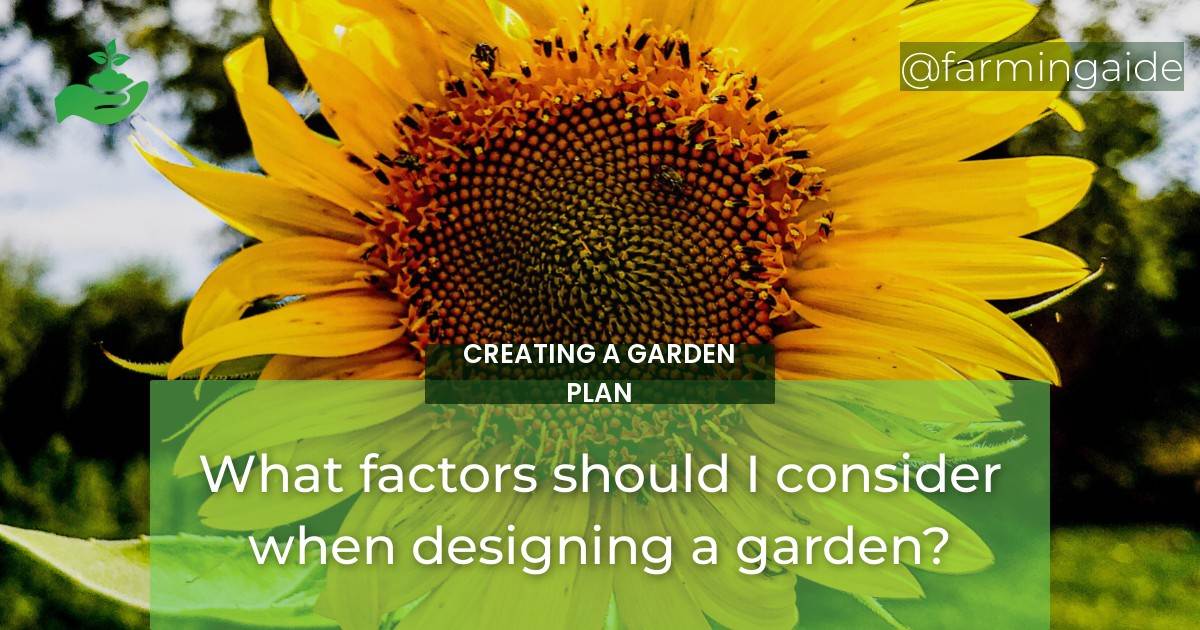Designing a garden can be a daunting task, but with proper planning, it can be an enjoyable and rewarding experience. The key to designing a successful garden is considering the various factors that can affect plant growth and overall aesthetics. In this article, we will discuss the top factors to consider when designing a garden to help you create a beautiful and thriving outdoor space.
Importance of Planning
Before you start planting, it’s crucial to have a solid plan in place. A garden plan can help you save time, money, and effort in the long run. It can also help you visualize the end result and ensure that your garden meets your expectations.
Site Assessment
The first step in designing a garden is assessing your site. This involves analyzing the topography, drainage, and other key factors that can affect plant growth. By understanding your site’s characteristics, you can choose plants and features that are well-suited to your garden’s conditions.
ALSO READ
Sun Exposure
Sun exposure is one of the most critical factors to consider when choosing plants. Different plants have different sun requirements, so it’s essential to choose plants that can thrive in your garden’s specific conditions.
Soil Type
Soil type is another critical factor to consider when designing a garden. Different plants have different soil requirements, so it’s important to choose plants that are well-suited to your garden’s soil type. You can determine your soil type by conducting a soil test or observing the soil’s texture and color.
ALSO READ
Climate
The climate of your region can also affect plant growth. It’s important to choose plants that can thrive in your specific climate to ensure that your garden remains healthy and vibrant throughout the year.
Garden Size
The size of your garden can also affect your plant selection and placement. It’s important to choose plants that are well-suited to your garden’s size and consider how you can maximize space while still creating an aesthetically pleasing layout.
Budget
Creating a budget for your garden design is essential to ensure that you don’t overspend. By setting a budget, you can allocate funds to different aspects of your garden design and choose materials and features that are within your price range.
Plant Selection
Choosing the right plants is crucial to creating a thriving garden. It’s important to select plants that are well-suited to your garden’s conditions, including sun exposure, soil type, and climate.
Garden Style
Choosing a garden style that suits your personal preferences and garden characteristics can help create a cohesive and visually appealing outdoor space. Some popular garden styles include cottage gardens, contemporary gardens, and formal gardens.
Maintenance
Maintenance is an essential aspect of garden design. Choosing low-maintenance plants and features can help reduce the time and effort required to keep your garden looking its best.
How can I incorporate flower design considerations into the overall garden design?
When designing a flower garden, considerations for overall garden design are crucial. You’ll want to think about the placement of your flower beds in relation to the rest of your garden, as well as the color, height, and bloom time of the flowers to ensure a cohesive and visually appealing design.
Conclusion
Designing a garden can be a challenging but rewarding experience. By considering the various factors that can affect plant growth and overall aesthetics, you can create a beautiful and thriving outdoor space that you’ll be proud to call your own.
RELATED ARTICLES:


